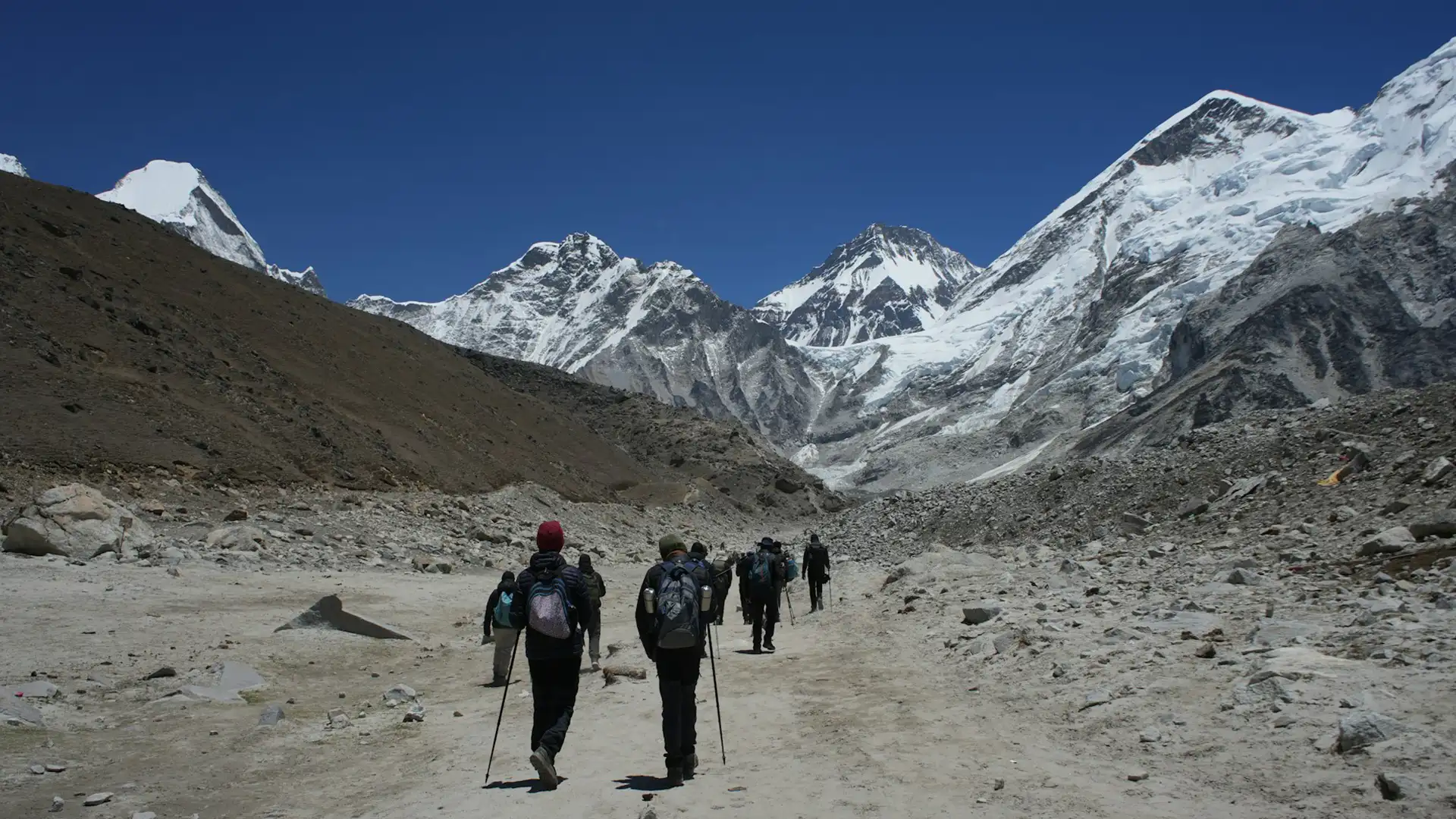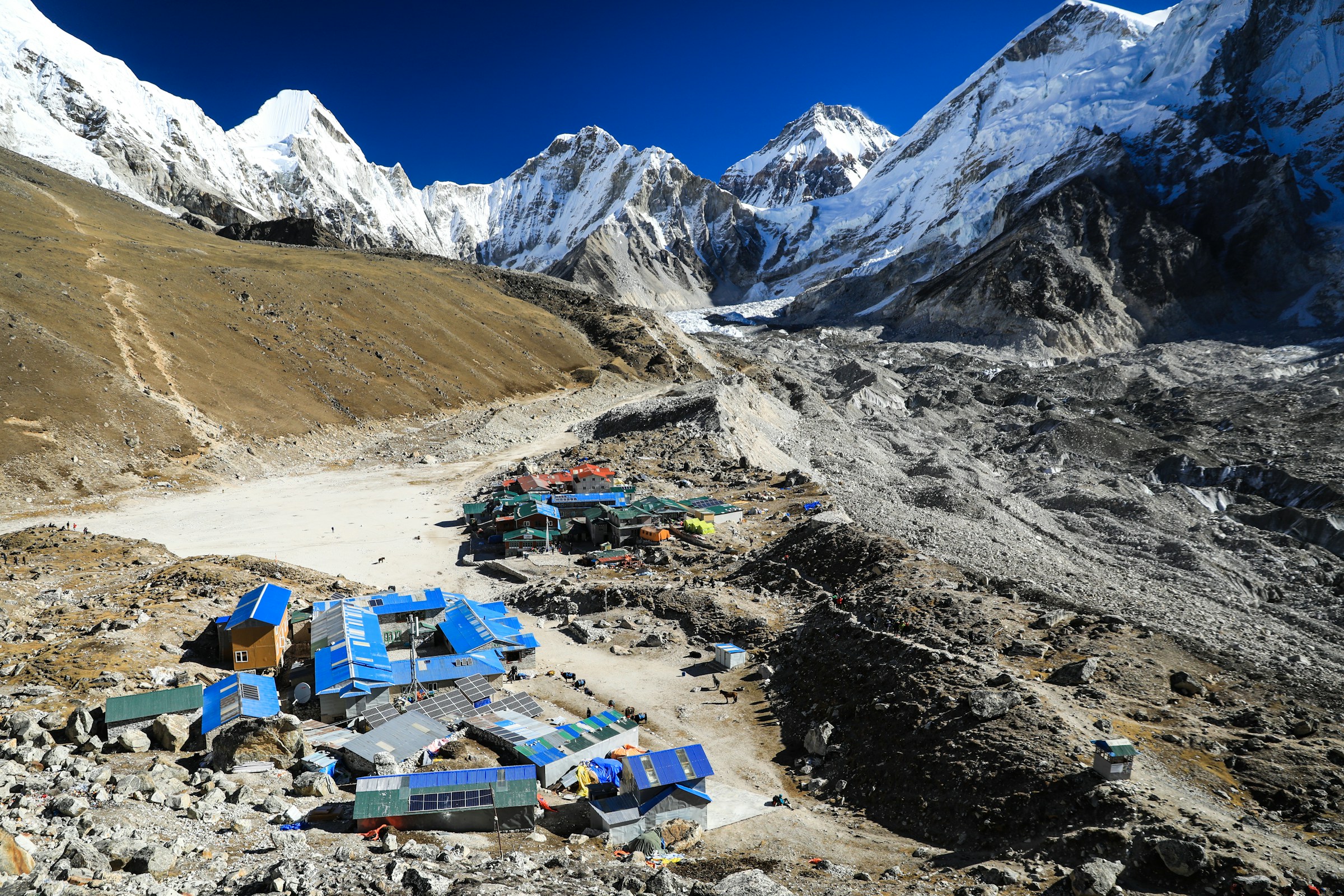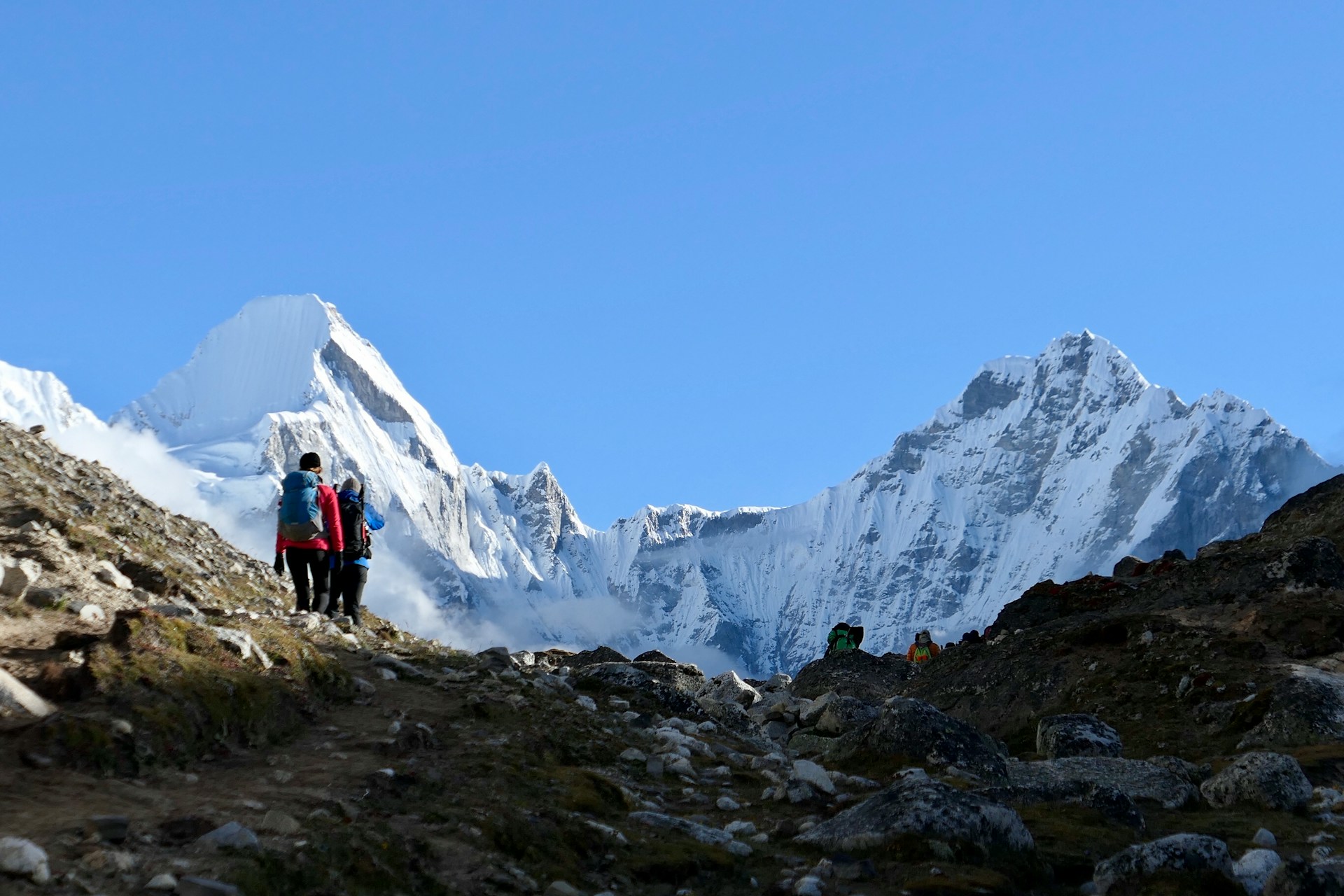Nepal, often referred to as the rooftop of the world, continues to be a premier destination for trekkers and adventure enthusiasts. By 2026, the country has embraced modernization while preserving its natural beauty, making trekking experiences more accessible, sustainable, and immersive than ever before. With improved infrastructure, eco-friendly tourism initiatives, and enhanced safety measures, Nepal is poised to welcome a new wave of travelers eager to explore its legendary trails in 2026.
In this blog, we’ll highlight four of the most iconic and breathtaking trekking routes in Nepal: Everest Base Camp Trek, Annapurna Base Camp Trek, Manaslu Circuit Trek, and Annapurna Circuit Trek.
Why Trekking in Nepal in 2026?
Trekking in Nepal in 2026 promises not only scenic beauty but also a more responsible and rewarding experience. The Nepalese government, along with local communities and international partners, has invested heavily in:
- Improved trail conditions with better signage and maintenance
- Eco-lodges and solar-powered teahouses offering comfortable stays without harming the environment
- Digital permits and e-registration systems to streamline entry into national parks and conservation areas
- Enhanced emergency services , including better-equipped mountain rescue teams and GPS tracking options for solo or small group trekkers
- Community-based tourism projects that ensure economic benefits reach local populations
These developments have made trekking safer, more organized, and more inclusive, allowing both novice and experienced hikers to enjoy the majesty of the Himalayas responsibly.
Everest Base Camp Trek – The Crown Jewel of Himalayan Treks
The Everest Base Camp (EBC) Trek remains one of the most sought-after adventures in the world. In 2026, it continues to attract thousands of trekkers annually who aspire to stand at the foot of the world’s highest peak — Mount Everest (8,848.86 meters).
Route Highlights:
- Starting Point : Lukla (2,800m), accessible via a thrilling flight from Kathmandu
- Key Stops : Phakding, Namche Bazaar (the gateway to Everest region), Tengboche (famous for its monastery), Dingboche, Lobuche, and Goraks Shep
- Summit Day Option : Climbing Kala Patthar (5,545m) offers the best panoramic view of Everest and surrounding peaks like Lhotse, Nuptse, and Ama Dablam
- Distance & Duration : Approximately 130 km round trip, taking about 12–14 days depending on acclimatization
What’s New in 2026:
- Mandatory Travel Insurance : Required for all trekkers entering the Sagarmatha National Park
- Eco-Friendly Initiatives : Use of biodegradable packaging, waste management checkpoints, and community-run lodges powered by hydro or solar energy
- Advanced Weather Forecasting : Real-time weather apps now integrated into trekking guides’ tools
Why You Should Do It:
The EBC Trek is not just a physical journey; it’s a cultural and spiritual voyage through Sherpa villages, ancient monasteries, and high-altitude landscapes. Standing at Kala Patthar during sunrise, watching the golden rays hit the summit of Everest, is an unforgettable moment that defines the essence of Himalayan trekking.
Annapurna Base Camp Trek – Into the Heart of the Annapurna Sanctuary
The Annapurna Base Camp (ABC) Trek takes you deep into the heart of the Annapurna Sanctuary, where you are surrounded by towering peaks such as Annapurna South, Hiunchuli, Machhapuchhre (Fishtail), and the mighty Annapurna I (8,091m).
Route Highlights:
- Starting Point : Nayapul, followed by a short drive or walk to Birethanti
- Key Stops : Hemja, Tikhedhunga, Ghorepani, Poon Hill (a must-do sunrise viewpoint), Ulleri, Chhomrong, Bamboo, Deurali, and finally Annapurna Base Camp (4,130m)
- Distance & Duration : Around 70–80 km trip, typically completed in 7–10 days
What’s New in 2026:
- New Teahouse Network : More lodging options with better amenities, especially between Chhomrong and ABC
- Poon Hill Upgrades : Improved paths and lighting for early morning hikes
- Wildlife Conservation Zones : Enhanced protection of rhododendron forests and pheasant species in the region
Why You Should Do It:
This trek is ideal for those seeking a shorter yet equally stunning high-altitude adventure. The final approach to Annapurna Base Camp, nestled among some of the tallest mountains in the world, is awe-inspiring. The trail also offers a rich blend of biodiversity, traditional Gurung culture, and warm hospitality.
Manaslu Circuit Trek – Off the Beaten Path Adventure
The Manaslu Circuit Trek is gaining popularity as a perfect alternative to the more crowded Everest and Annapurna trails. In 2026, it remains a relatively untouched gem, offering raw natural beauty and a true sense of solitude.
Route Highlights:
- Starting Point : Arughat Bazaar, with transportation to Sotikhola
- Key Stops : Jagat, Deng, Rana, Samagaun (home to Manaslu Base Camp and views of Mt. Manaslu), Larkya La Pass (5,106m), and Bimthang
- Distance & Duration : Approximately 170 km loop, taking around 14–18 days
- Restricted Area Permit Required : Since 2023, Manaslu requires a special permit and travel in groups of minimum two people with a licensed guide
What’s New in 2026:
- Infrastructure Development : Better bridges, landslide-prone area mitigation, and upgraded tea houses
- Cultural Preservation Projects : Local museums and homestays provide deeper insights into Tibetan-influenced Buddhist culture
- Increased Security : More frequent checkposts and regular patrols for safety
Why You Should Do It:
Manaslu offers a unique blend of high passes, glacial valleys, and remote villages rarely visited by mass tourism. The Larkya La Pass crossing is a highlight, offering panoramic views of Himlung Himal, Cheo Himal, and Annapurna II. This trek is ideal for those seeking a quieter, more introspective Himalayan journey.
Annapurna Circuit Trek – The Classic Himalayan Loop
The Annapurna Circuit Trek is considered one of the greatest treks in the world. While it has undergone changes over the years, 2026 sees a resurgence in its popularity due to improved road access and renewed interest in long-distance hiking.
Route Highlights:
- Starting Point : Besisahar (or Bhulbhule, if avoiding roads)
- Key Stops : Jagat, Tal, Chame, Pisang, Manang, Tilicho Lake (optional detour), Yak Kharka, Thorong Phedi, and the famous Thorong La Pass (5,416m)
- Ending Point : Muktinath or Jomsom, from where you can fly back to Pokhara
- Distance & Duration : Around 230 km, usually completed in 20–25 days
What’s New in 2026:
- Road Extensions : Some parts of the lower circuit now accessible by vehicle, allowing trekkers to customize their route
- Higher Standards in Lodging : Modern facilities in major stops like Manang and Muktinath
- Thorong La Rescue Posts : Increased number of emergency shelters and oxygen supplies along the pass
Why You Should Do It:
This trek is a complete Himalayan immersion — from lush subtropical forests to arid Tibetan plateaus. Crossing the Thorong La Pass is a defining moment for many trekkers, symbolizing resilience and achievement. Along the way, you’ll encounter diverse ethnic cultures, ancient temples, and sacred pilgrimage sites like Muktinath.
Choosing the Right Trek for You
| Trek | Difficulty | Duration | Best Season | Highlights |
|---|---|---|---|---|
| Everest Base Camp | Moderate | 12–14 Days | Spring / Autumn | Everest Views, Sherpa Culture, Kala Patthar Summit |
| Annapurna Base Camp | Easy-Moderate | 7–10 Days | Spring / Autumn | Panoramic Mountain Views, Poon Hill Sunrise |
| Manaslu Circuit | Challenging | 14–18 Days | Spring / Autumn | Remote Villages, Larkya La Pass, Tibetan Culture |
| Annapurna Circuit | Challenging | 20–25 Days | Spring / Autumn | Thorong La Pass, Tilicho Lake, Cultural Diversity |
Each trek offers a unique flavor of the Himalayas. Your choice should depend on your fitness level, available time, and the kind of experience you’re looking for — whether it’s iconic peaks, cultural immersion, or off-the-grid exploration.
Tips for Trekking in Nepal in 2026
- Permits & Documentation : Ensure you have the necessary permits (TIMS Card, National Park Entry Permit, Restricted Area Permit if applicable). These can now be obtained online or through registered agencies.
- Health & Fitness : Train well in advance, focusing on cardiovascular endurance, strength training, and altitude adaptation.
- Travel Insurance : Make sure your insurance covers high-altitude trekking, medical evacuation, and trip cancellations.
- Pack Smart : Carry essentials like layers, waterproof gear, trekking poles, first aid kit, headlamp, and reusable water bottles. Consider using UV filters or purification tablets.
- Respect Local Culture : Dress modestly, ask before photographing locals, and follow etiquette in religious places.
- Stay Connected : SIM cards from Nepal Telecom, Ncell, or Smart Cell offer good coverage up to certain altitudes. Download offline maps and translation apps.
- Support Sustainable Tourism : Choose eco-conscious lodges, avoid single-use plastics, and contribute to local conservation efforts.
Conclusion: Embrace the Spirit of the Himalayas
As we step into 2026, Nepal continues to shine as a beacon for trekkers worldwide. Whether you’re chasing the ultimate high at Everest Base Camp, seeking solace in the Annapurna Sanctuary, exploring the wilds of Manaslu, or completing the legendary Annapurna Circuit, each trail tells a story of nature, culture, and human perseverance.
With every step, you become part of a timeless tradition — walking where legends once stood, breathing the crisp mountain air, and discovering the soul of the Himalayas. So pack your boots, set your compass, and get ready for the adventure of a lifetime in the land of snow gods and smiling smiles.



